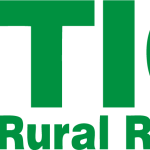Listen to this week’s KTIC Radio extension agronomy corner with Nathan Mueller
Radio recording based off article written by Nathan Mueller for the Nebraska Farmer Magazine Extension Crop Connection: Does soybean relative maturity matter in eastern Nebraska?
“This is Dr. Nathan Mueller, your local agronomist with Nebraska Extension for Dodge and Washington counties. At our Nebraska Extension Soybean Midwest Production Clinic in August, I asked agronomists and producers to rank various soybean traits in order of importance. They ranked yield potential, herbicide-trait technologies and relative maturity as the three most important. So how important is soybean relative maturity in eastern Nebraska?
Three recent data analysis studies shared in 2017 do apply to soybean growers in eastern Nebraska. Researchers across the Midwest provided data to University of Wisconsin researchers to help create a new delineation for where relative maturities should be planted across the United States. This kind of work was last done in 1970 and 2003. For eastern Nebraska, the data suggests the ideal relative maturity is around 2.5 bordering South Dakota to about at 3.8 along the Kansas border.
A UNL led producer survey focused on at soybean yield gaps for various climate and soils across the United States and found there was a consistent trend in Nebraska for slightly shorter relative maturities for higher yields.
FIRST Seed Tests has provided third-party soybean variety testing in northeast and southeast Nebraska since 2012. When I conducted data analysis of their data from 2012-2016, I found that relative maturity is not a large factor for explaining yield variation unless you get the outside the relative maturity range for Nebraska. On average a top-performing 2.6 relative maturity soybean variety can yield just as well as a 3.4 relative maturity variety in northeast Nebraska. Therefore, growers and agronomist should look at variety yield performance across a range of relative maturities and then start selecting for other important traits to address yield limiting field factors. Farmers can take advantages of diversifying and leveraging various relative maturities such as trying to capture seed moisture at harvest closer to 13% by using a combination of planting date and relative maturity to spread out harvest and allow time to get a cover crop or winter wheat cash crop planted
There are numerous sources of information to help select a group of top yielding varieties with a range of relative maturities. Sources include on-farm yield data, university data and faculty, third-party data and resources, and seed company resources and representatives. So this fall when you start ordering seed, I encourage you to diversify and leverage soybean relative maturity.
To get more information on relative soybean maturity for eastern Nebraska, visit our website at croptechcafe.org or give me a call at 727-2775. Know your crop, know your tech, know your bottom line. This is Dr. Nathan Mueller, your local agronomist for Nebraska Extension on KTIC radio.”


